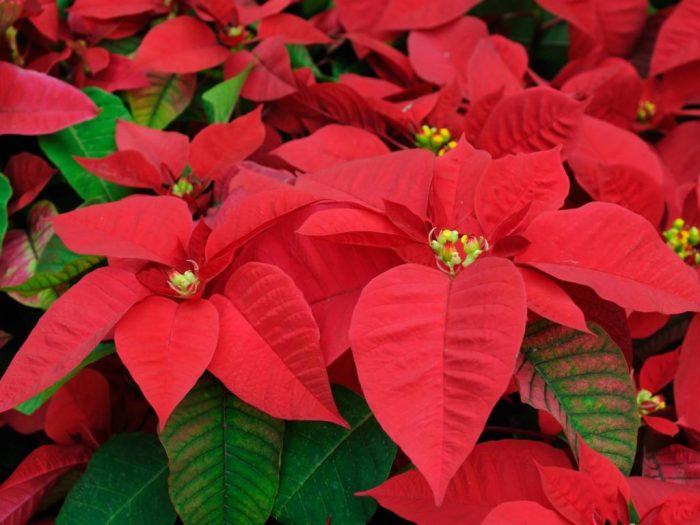How Much to Water Poinsettia Plants
Watering Poinsettia Plants: A Comprehensive Guide

Source: b-cdn.net
How much to water poinsettia plants – Proper watering is key for vibrant poinsettias; allow the soil to dry slightly between waterings to prevent root rot. Understanding how frequently to water depends on factors like pot size and environmental conditions, but the fundamental reason for watering is to provide the plant with the hydration it needs. To fully grasp this, consider reading about how does water help the plant grow , which will clarify the plant’s water uptake and utilization.
This knowledge will then help you determine the optimal watering schedule for your poinsettia, ensuring its health and longevity.
Poinsettias, with their vibrant bracts, are beloved holiday plants. However, their proper care, especially watering, requires understanding. This guide provides a detailed explanation of watering frequency, techniques, and troubleshooting for healthy poinsettia growth.
Watering Frequency for Poinsettia Plants
The ideal watering schedule for poinsettias varies depending on the season, pot size, and plant maturity. During winter, when growth is slower, watering should be less frequent. Conversely, during summer’s active growth, more frequent watering is necessary. Larger pots retain moisture longer than smaller ones, impacting watering needs. Mature plants, with established root systems, typically require less frequent watering than younger plants.
| Season | Pot Size (inches) | Plant Maturity | Watering Frequency |
|---|---|---|---|
| Winter | <6 | Young | Every 7-10 days |
| Winter | 6-10 | Young | Every 10-14 days |
| Winter | >10 | Mature | Every 14-21 days |
| Summer | <6 | Young | Every 3-5 days |
| Summer | 6-10 | Young | Every 5-7 days |
| Summer | >10 | Mature | Every 7-10 days |
To determine if watering is needed, check the soil moisture. Stick your finger about an inch into the soil; if it feels dry, it’s time to water. Wilting leaves are another clear indication of thirst.
Methods for Watering Poinsettia Plants
Several methods exist for watering poinsettias, each with advantages and disadvantages. Top watering, the most common method, involves pouring water directly onto the soil surface. Bottom watering, where the pot sits in a tray of water, allows for even moisture absorption. Self-watering pots provide a reservoir of water, reducing the frequency of watering.
- Top Watering:
- Pour water slowly and evenly around the base of the plant, avoiding wetting the leaves.
- Water until water drains from the drainage holes.
- Allow excess water to drain completely.
- Bottom Watering:
- Place the pot in a tray filled with a few inches of water.
- Allow the plant to absorb water for 30-60 minutes.
- Remove the pot from the tray and allow excess water to drain.
- Self-Watering Pots:
- Maintain the water reservoir at the recommended level.
- Monitor the water level regularly and refill as needed.
- Ensure proper drainage to prevent root rot.
Signs of Overwatering and Underwatered Poinsettia Plants

Source: plantinstructions.com
Overwatering and underwatering both negatively impact poinsettias. Overwatering leads to yellowing leaves, leaf drop, and eventually root rot. Underwatered poinsettias exhibit wilting leaves, dry soil, and leaf browning.
| Symptom | Cause | Corrective Measure |
|---|---|---|
| Yellowing leaves | Overwatering | Reduce watering frequency; improve drainage |
| Leaf drop | Overwatering | Reduce watering frequency; improve drainage |
| Root rot | Overwatering | Repot in fresh, well-draining soil |
| Wilting leaves | Underwatering | Water thoroughly until water drains |
| Dry soil | Underwatering | Water thoroughly until water drains |
| Leaf browning | Underwatering | Water thoroughly until water drains |
Environmental Factors Affecting Poinsettia Watering Needs, How much to water poinsettia plants

Source: gardenercorner.com
Temperature, humidity, light intensity, and pot material significantly influence a poinsettia’s water needs. Higher temperatures and lower humidity increase evaporation, requiring more frequent watering. Bright light increases the plant’s metabolic rate, leading to higher water consumption. Terracotta pots are more porous than plastic, resulting in faster water evaporation.A visual representation would show a poinsettia in different environments: one in a brightly lit, warm room with a terracotta pot (showing frequent watering needed); another in a cooler, humid room with a plastic pot (showing less frequent watering).
The illustration would clearly depict the differences in soil moisture and plant health based on these environmental factors.
Water Quality and Poinsettia Health
Using properly filtered water is crucial for poinsettia health. Hard water, with high mineral content, can clog the soil and hinder water absorption. Chlorinated water can damage the roots. Filtered or distilled water is recommended. Ideally, water should have a slightly acidic pH (around 6.0-6.5) and minimal mineral content.
Questions and Answers: How Much To Water Poinsettia Plants
What type of water is best for poinsettias?
Use lukewarm, filtered water to avoid chlorine and mineral buildup which can harm the plant.
How often should I check the soil moisture?
Check the soil moisture daily, especially during warmer months. Stick your finger about an inch into the soil; if it feels dry, it’s time to water.
My poinsettia leaves are drooping. Is it over or underwatered?
Drooping leaves can indicate both overwatering (roots suffocating) or underwatering (lack of moisture). Check the soil moisture; if dry, water thoroughly. If soggy, allow the soil to dry out before watering again.
Can I use tap water for my poinsettia?
While you can use tap water, filtered or rain water is preferable to avoid potential damage from chlorine or minerals.
